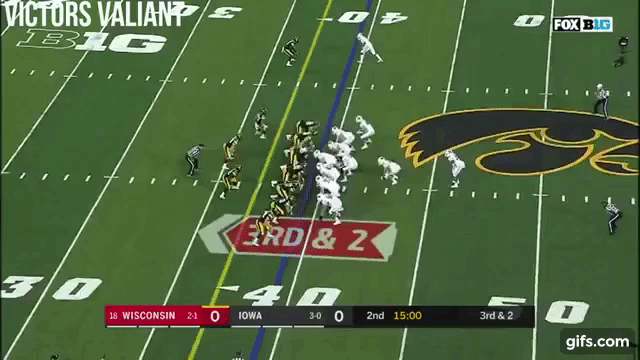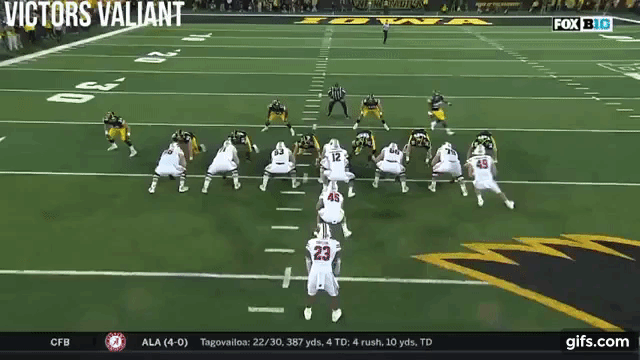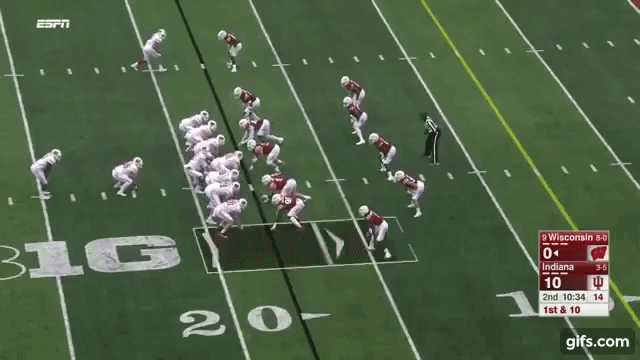Inside the Playbook: Wisconsin Play Action Power O Wheel
Against Iowa, Wisconsin was finally able to get things going offensively when they returned to an old friend in the offense: the wheel route off of Power O. I knew I had seen it previously, and mistakenly noted it was a few years ago in a bowl game, but actually it was against Indiana last year. The basics of the play are a hard Power O play action out of a heavy formation. Rather than kicking out, the FB plants and runs upfield on the wheel route. What ensues is beautiful, beautiful FBs rumbling in wide open spaces. Let's take a look.
Power O
Like many teams, Power O is one of Wisconsin's staple plays. They run it out of a wide variety of formations, from 11 personnel to 22 personnel. They even like to add blockers from the backside to run Lead Power O.
Out of a condensed formation, particularly a heavy set like 22 personnel, a defense is forced to involve safeties in run support. These deep defenders are often going to key the TEs release, and when the TE down blocks, they will fill down to help account for the puller.
Wheel Route
Most of the time, when teams run play action off Power O, they are either leaving both backs in protection to allow for a deep developing pass, or they are quickly attacking the flat with the FB to give conflict to the edge defender. Defenses know these tendencies and often try to hard set the edge, either through wrong arming the kick blocker or anchoring. But if the FB releases instead of blocks, the reaction is typically to sprint straight to the flat to try to cut off the passing angle to the FB.
So now you're in a heavy set and the defense is loading up the box with 10 guys. You can still run because you've learned how to block 10 with 8 (and more so, which guys to leave unblocked to the backside of the play). As the TE down blocks he gives the key to the playside safety and LB to fill down.
Meanwhile, the edge defender is preparing to take on a kick block. With most defenses in this scenario, he won't be wrong arming because he doesn't have a defender looping around him to take contain, so for the most part they are anchoring. They do so by squeezing down the run lane as much as they can before initiating contact with the blocker (don't wait to be blocked). But if you go in expecting the blocker to also be going for you, you may end up a little embarrassed when he runs right by. And suddenly you're grasping at air as the FB is running by you.
Traditionally with the wheel, you see a post route paired with it to form a post-wheel combination. This post is designed to keep the defense inside. But from the condensed formation, the goal is to hard sell Power, and the best way to pull the safety out of the play is to give a run key. The WR to the far side of the field will attempt to pull and additional secondary coverage his way.
Examples











Great stuff. It's interesting that the WR would also have been wide open at the top had he not stumbled, but that appears to be more the result of a good route than scheme.
ReplyDeleteAlec Ingold's Twitter bio used to be "I run 3 yards at a time." He had to change that for obvious reason.